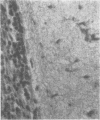Abstract
Dementia paralytica may present diagnostic difficulties when routine serological test using a non-treponemal antigen is non-reactive. We present an illustrative demented patient who initially had negative VDRL test both in his serum and cerebrospinal fluid. However, the brain biopsy specimen showed active meningoencephalitis. By special staining technique, a spiral organism was found in the brain exhibiting morphology perfectly compatible with treponema pallidum. Later in the course, the VDRL became reactive in the blood but remained non-reactive in the cerebrospinal fluid. On the basis of the experience of other workers in the field and ours with this patient, we advise the use of FTA-ABS test as a screening procedure in patients with neurological problems of possible syphilitic origin. We urge further research in this field.
Full text
PDF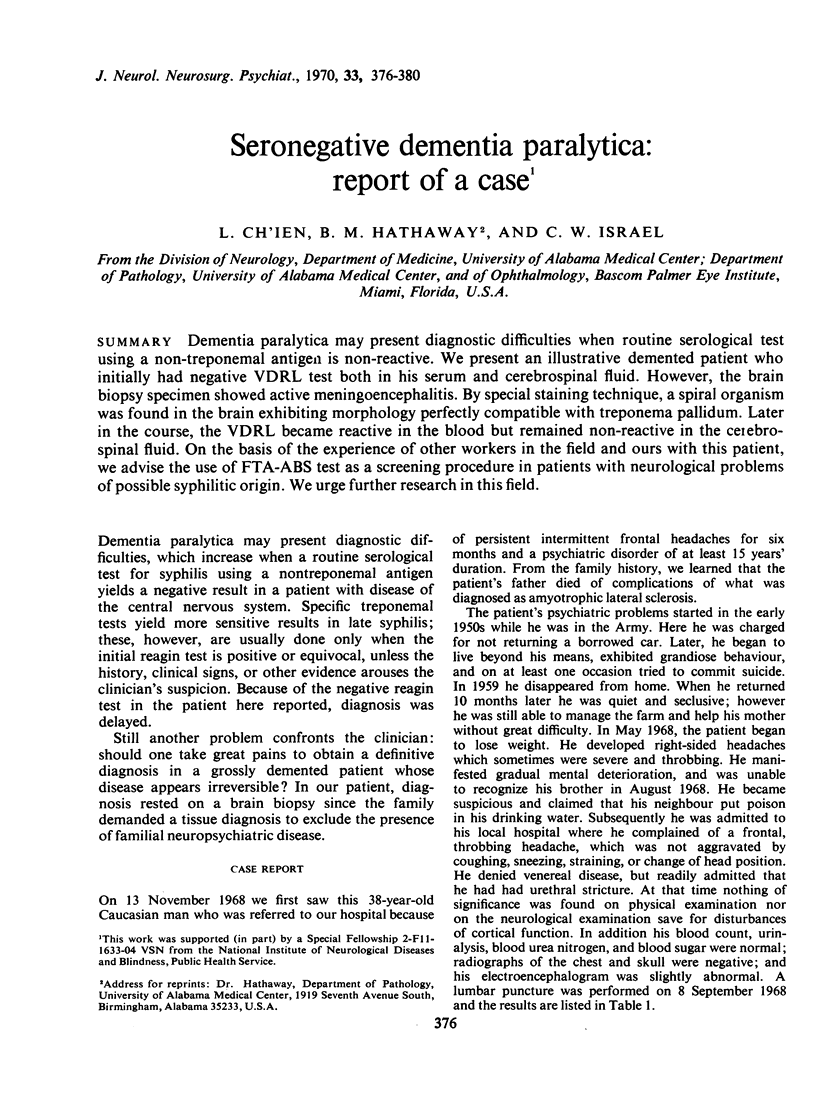
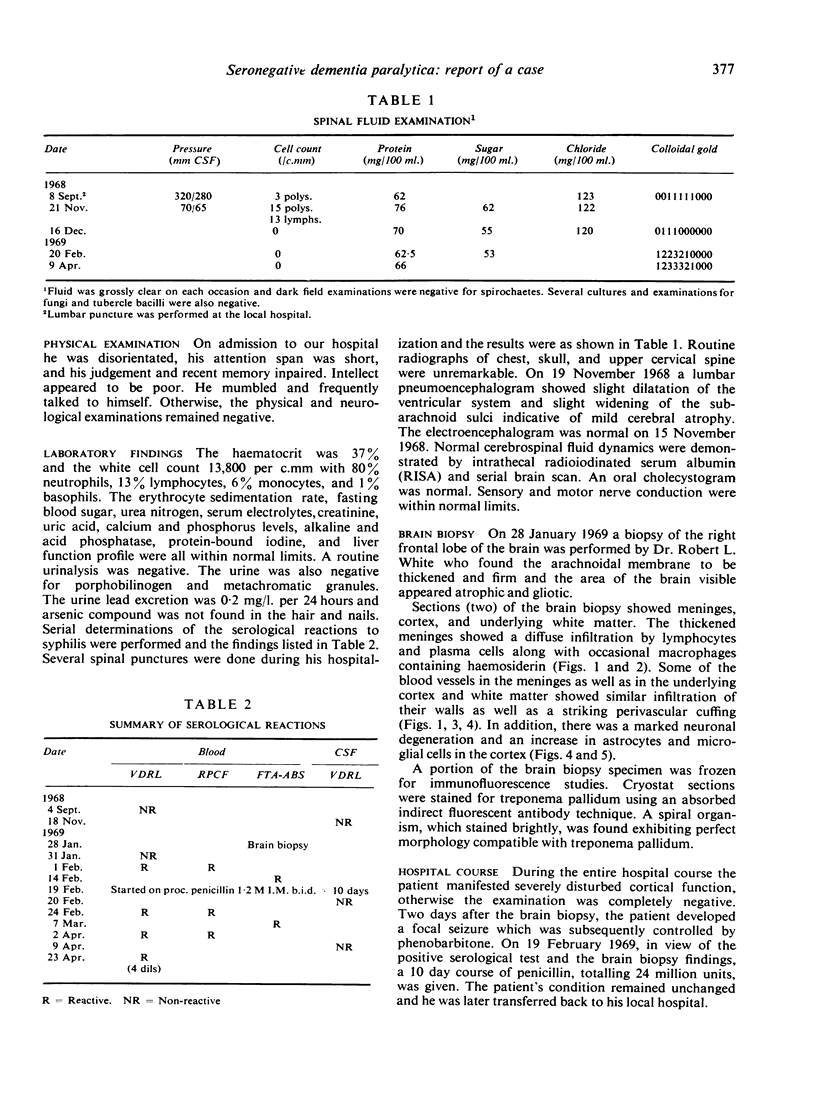
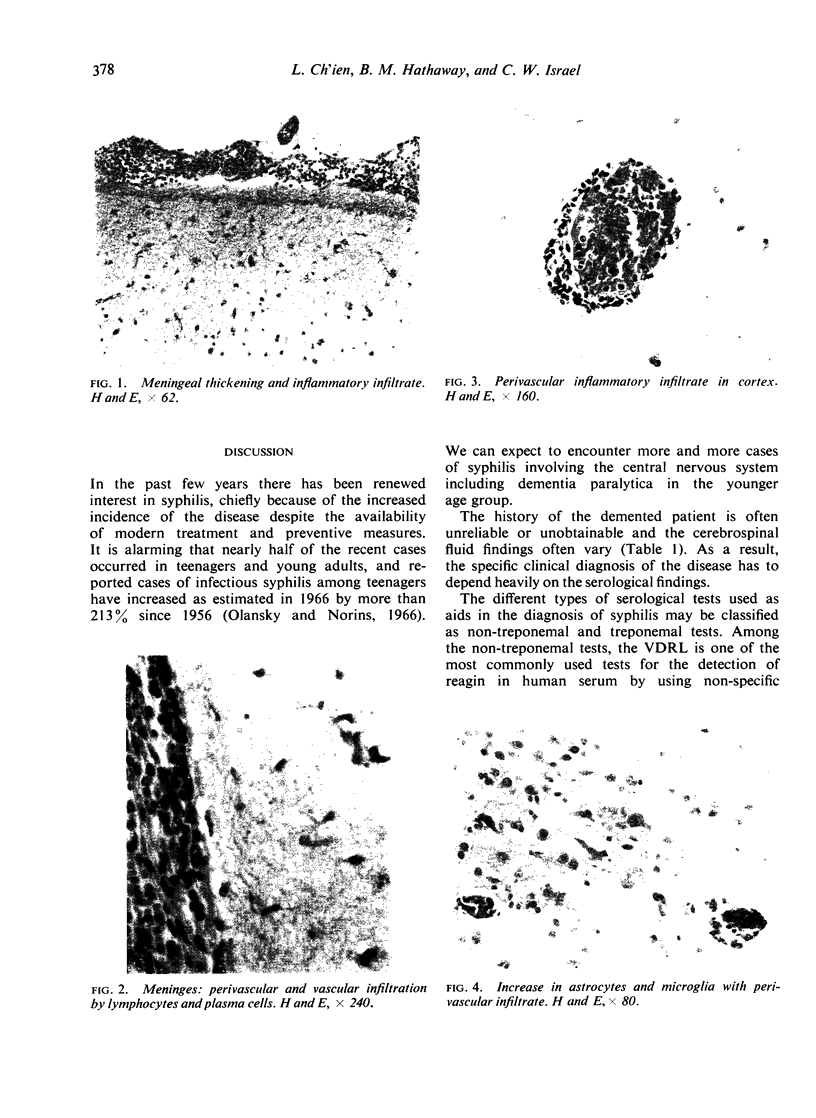
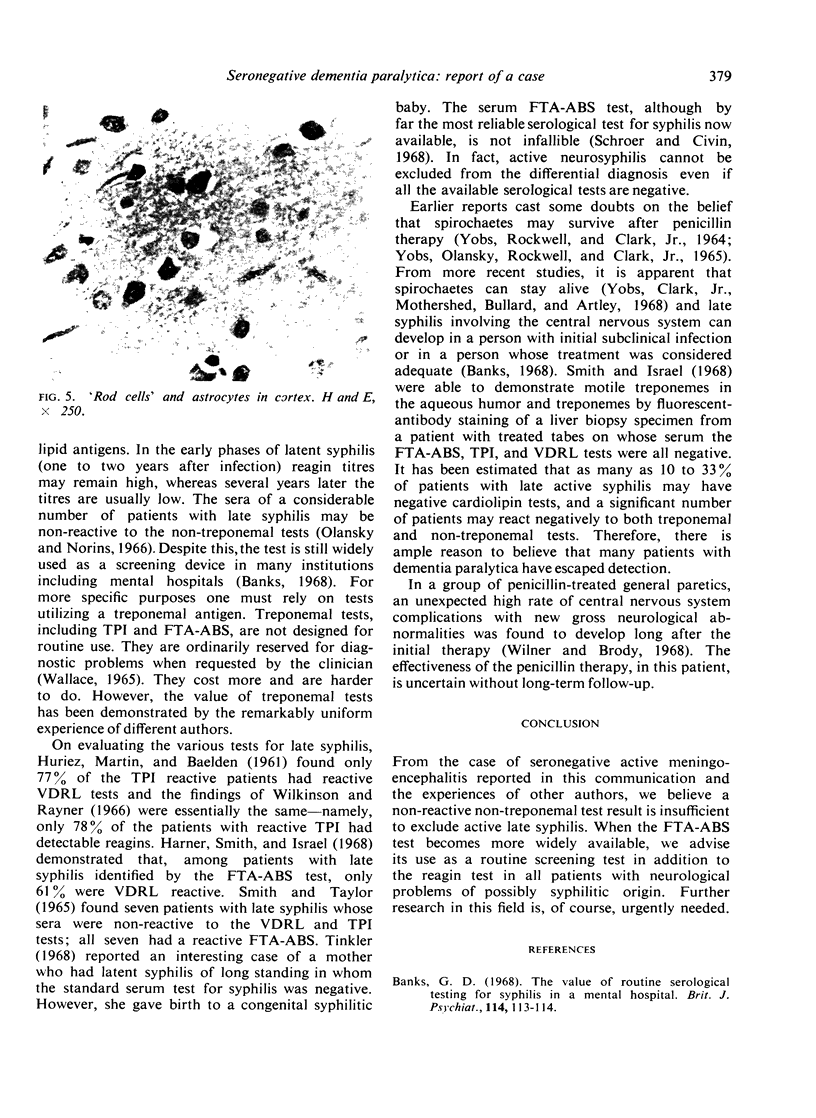
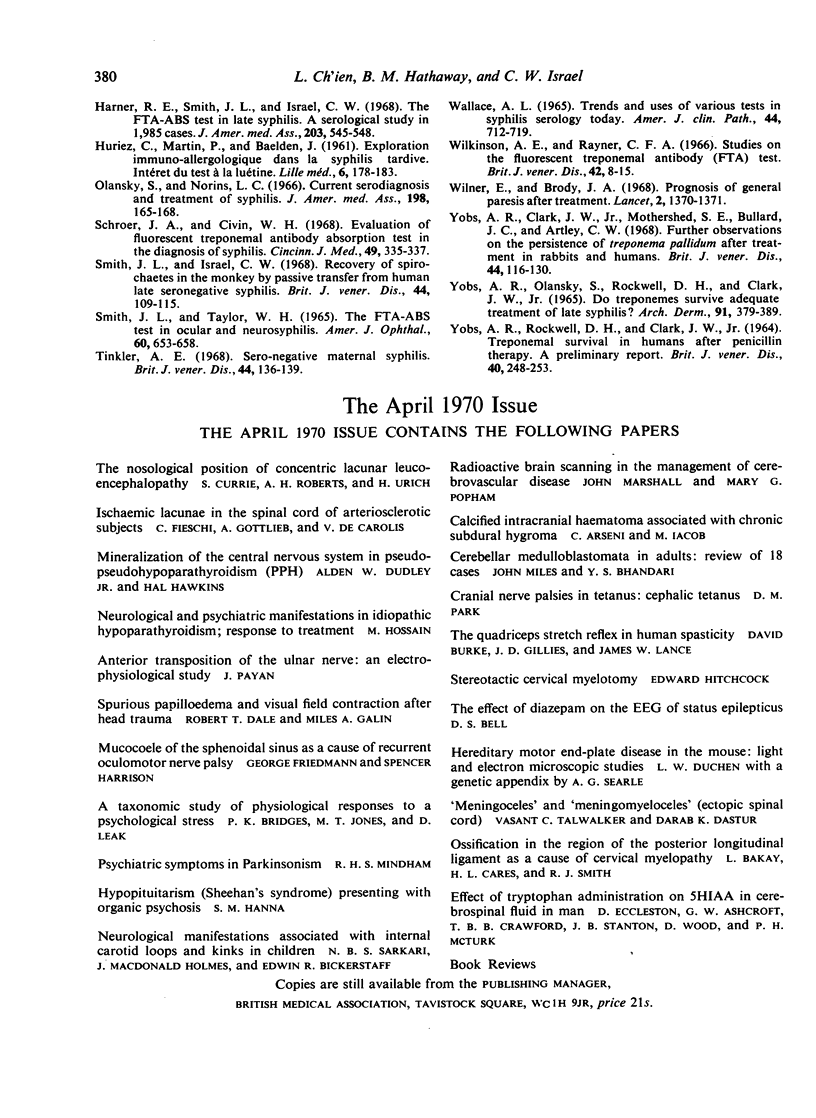
Images in this article
Selected References
These references are in PubMed. This may not be the complete list of references from this article.
- Banks G. D. The value of routine serological testing for syphilis in a mental hospital. Br J Psychiatry. 1968 Jan;114(506):113–114. doi: 10.1192/bjp.114.506.113. [DOI] [PubMed] [Google Scholar]
- Harner R. E., Smith J. L., Israel C. W. The FTA-ABS test in late syphilis. A serological study in 1,985 cases. JAMA. 1968 Feb 19;203(8):545–548. [PubMed] [Google Scholar]
- Lawton Smith J., Israel C. W. Recovery of spirochagetes in the monkey by passive transfer from human late sero-negative syphilis. Br J Vener Dis. 1968 Jun;44(2):109–115. doi: 10.1136/sti.44.2.109. [DOI] [PMC free article] [PubMed] [Google Scholar]
- Olansky S., Norins L. C. Current serodiagnosis and treatment of syphilis. JAMA. 1966 Oct 10;198(2):165–168. [PubMed] [Google Scholar]
- Smith J. L., Taylor W. H. The FTA-ABS test in ocular and neurosyphilis. Am J Ophthalmol. 1965 Oct;60(4):653–658. doi: 10.1016/0002-9394(65)92255-5. [DOI] [PubMed] [Google Scholar]
- Tinkler A. E. Sero-negative maternal syphilis. Report of a case. Br J Vener Dis. 1968 Jun;44(2):136–139. doi: 10.1136/sti.44.2.136. [DOI] [PMC free article] [PubMed] [Google Scholar]
- Wallace A. L. Trends and uses of various tests in syphilis serology today. Am J Clin Pathol. 1965 Dec;44(6):712–719. doi: 10.1093/ajcp/44.6_ts.712. [DOI] [PubMed] [Google Scholar]
- Wilkinson A. E., Rayner C. F. Studies on the fluorescent treponemal antibody (FTA) test. Br J Vener Dis. 1966 Mar;42(1):8–15. doi: 10.1136/sti.42.1.8. [DOI] [PMC free article] [PubMed] [Google Scholar]
- Wilner E., Brody J. A. Prognosis of general paresis after treatment. Lancet. 1968 Dec 28;2(7583):1370–1371. doi: 10.1016/s0140-6736(68)92674-3. [DOI] [PubMed] [Google Scholar]
- YOBS A. R., OLANSKY S., ROCKWELL D. H., CLARK J. W., Jr DO TREPONEMES SURVIVE ADEQUATE TREATMENT OF LATE SYPHILIS? Arch Dermatol. 1965 Apr;91:379–389. [PubMed] [Google Scholar]
- YOBS A. R., ROCKWELL D. H., CLARK J. W., Jr TREPONEMAL SURVIVAL IN HUMANS AFTER PENICILLIN THERAPY: A PRELIMINARY REPORT. Br J Vener Dis. 1964 Dec;40:248–253. doi: 10.1136/sti.40.4.248. [DOI] [PMC free article] [PubMed] [Google Scholar]
- Yobs A. R., Clark J. W., Jr, Mothershed S. E., Bullard J. C., Artley C. W. Further observations on the persistence of Treponema pallidum after treatment in rabbits and humans. Br J Vener Dis. 1968 Jun;44(2):116–130. doi: 10.1136/sti.44.2.116. [DOI] [PMC free article] [PubMed] [Google Scholar]





